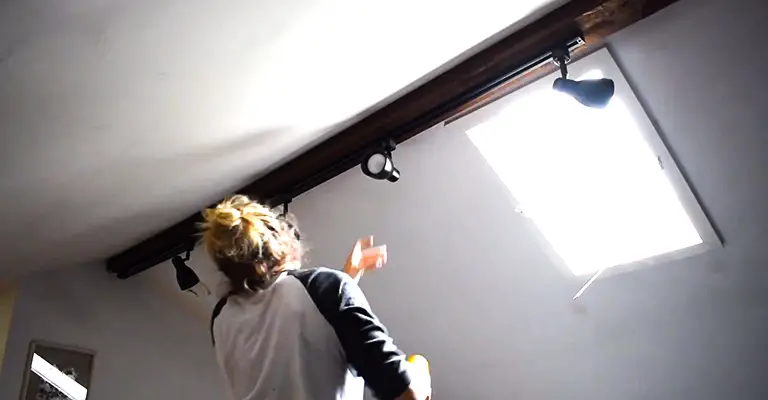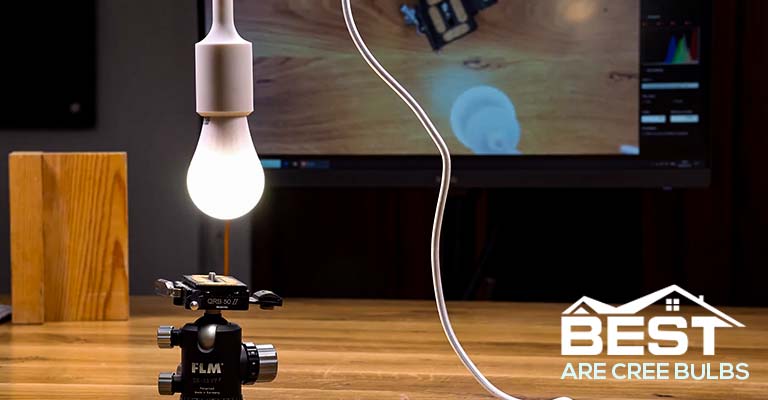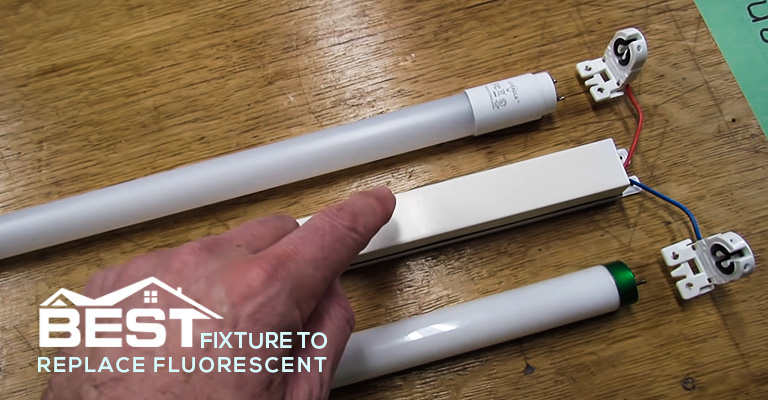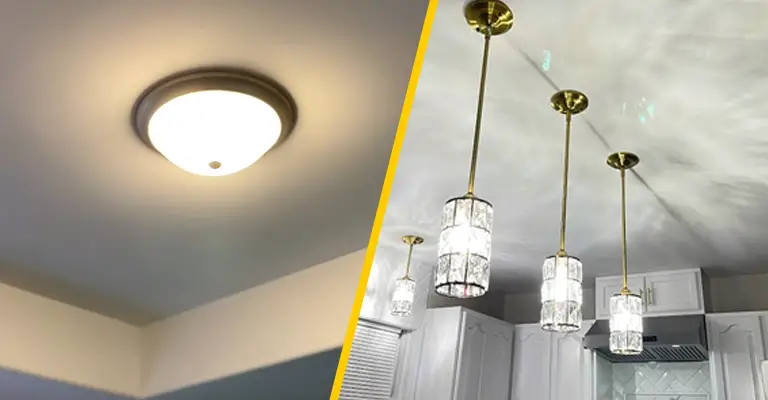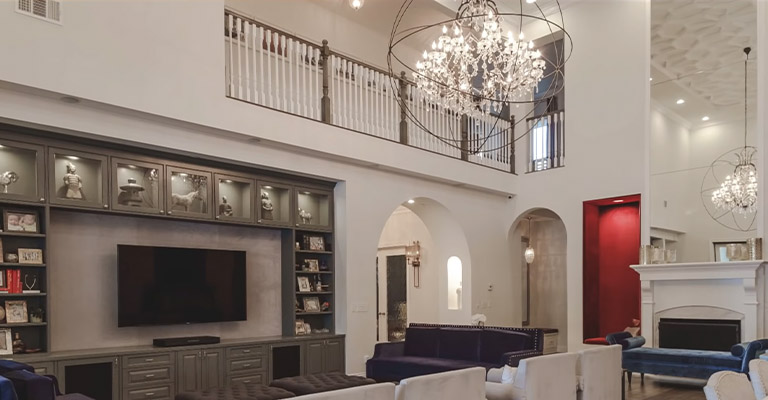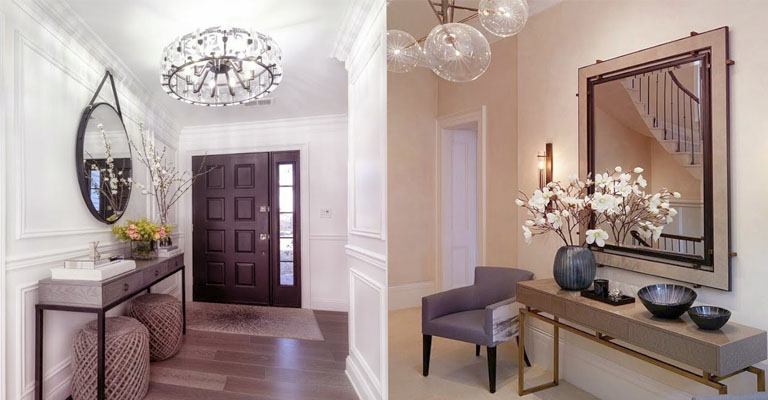Where Should Recessed Lighting Be Placed In Kitchen?
It is recommended to place the recessed lighting approximately 2 feet away from the cabinetry. Kitchen ceiling lights serve multiple functions, and they provide light over counters directly below cabinets, which are a great way to soften shadows.
You have recessed lights placed closer to a cabinet than a wall because they provide greater illumination.
Your recessed lighting layout must be determined before you begin designing your project. Knowing the layout will assist you in selecting recessed lighting fixtures and developing a plan for installing them.
As a general rule, you should install no fewer than one light per 25 square feet of living space when planning recessed lighting.
There is no guarantee that every application will follow this pattern, and it may vary depending on what you seek in the space and whether the room is irregularly shaped.
If you’re ready to buy recessed lighting, check out our recommended products after you read our article about how to layout recessed lighting. They are surprisingly inexpensive.
How Far Should Recessed Lights Be From Cabinets?
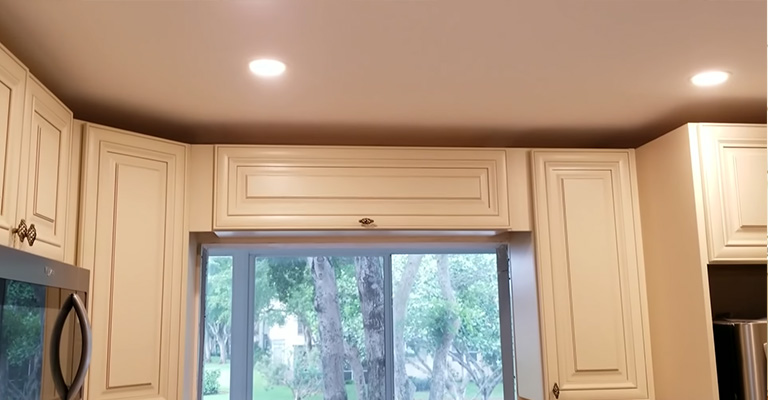
For creating a lighting plan for recessed areas in the kitchen, here are some quick tips. Drawing a rough plan of the kitchen is a good place to start.
When adding recessed lights to an existing kitchen, be sure to note existing lighting fixtures, such as ceiling fixtures and range lights. It should work with your existing fixtures no matter what new recessed lighting you add.
You may need several fixtures, depending on the size of your room. In general, one recessed light should be used for every four to six square feet of ceiling area. By doing so, the entire room is illuminated evenly.
To provide adequate lighting in your kitchen, you should rely solely on recessed ceiling lights. The lights are often placed outside of the room as another common layout. Designed to illuminate countertop work areas or sink areas, the lights avoid creating shadows at the counters by targeting them at the edges.
Light counter areas with recessed downlights spaced 12 inches apart and 12 inches to 18 inches away from cabinets. Your unique kitchen space will determine the exact placement of lighting. The following are some basic kitchen lighting ideas.
How Far From The Wall Should Recessed Lights Be In Kitchen?
The distance between recessed lights and the wall should be roughly three feet. The ceiling will appear lower if there are shadows in any corner. The lights will make the room appear brighter and larger as long as they are reflected on the wall at the right distance.
The spacing of your recessed lights should be determined by dividing the ceiling height by two. The average recessed light should be spaced approximately 4 feet apart in a room with a ceiling height of 8 feet. You will need about five feet of space between each fixture if the ceiling is ten feet high.
Use this rule as a baseline, however. It may be necessary to space the recessed lights closer or further apart depending on the type and wattage of light being used, the brightness of the decor in the room, and the purpose of the lights.
Rather than rely on dimming, clever strategies include “over-illuminating” the room with dimmable lights and then controlling the brightness with dimmers.
How Do You Install Recessed Lights In Kitchen?
This is what you should start with and end with. Making sure the lights are placed properly requires planning ahead. Measure the space first. Scale the drawing to 1/4 inch on graph paper. One foot equals one meter.
Include any wall-mounted fixtures you’d like to highlight in the furniture arrangement. Choose a goal for the lights. It’s possible you’d like to provide ambient lighting for a special piece of artwork, add task lighting in your hobby area and improve the general lighting in your home.
You can get help with the design at a lighting showroom. You can get help from a lighting salesperson selecting recessed lighting housings, trims, and lamps and determining the optimal locations on the ceiling.
Instead of buying from a home center, shop at a local store if you are confident in your ability to plan. The only downside is that you’ll have a limited selection of fixtures to choose from. When you are finished with the project, have the work inspected by the local building department.
- Saw the ceiling joists and the top of the wall wired through a slot in the ceiling. Afterward, cut the holes for the housings of the recessed lights.
- Turn off the power to the outlet at the main electrical panel and use an existing power box as a source of power. Take a power cable and fish it to the new switch location through the hole.
- The new switch box must be cut according to the plan you have drawn. Remodeling boxes that come with cable clamps are ideal. Pull in the power and light cables before mounting the box.
- Create a cable route by drilling through the top plate and the joists. At least 2 inches away from the center of the plate, place the holes. Joists are measured from top to bottom.
- To access joists that can’t be reached from the ceiling slot, drill through the holes in the recessed lights. If you choose a circuit, make sure the additional lights will not overload it.
- You must turn off the circuit breakers or unscrew the fuses that control the circuit when you have chosen the electrical box to connect to.
Where Should Recessed Lights Be Placed On Kitchen Counters?
In addition to illuminating the counter work area, or the sink, the lights will prevent shadows from being created on the counters by people who are working at them. Light counter areas with recessed downlights spaced 12 inches apart and 12 inches to 18 inches away from cabinets.
How Far Apart Should Recessed Lights Be Placed In A Kitchen?
Light counter areas with recessed downlights spaced 12 inches apart and 12 inches to 18 inches away from cabinets. The exact placement of lighting will be determined by your unique kitchen space. The following are some basic kitchen lighting ideas.
Can You Put Recessed Lights Between Floors?
If you want to install recess lighting between floors, you need air-tight, shallow depth fixtures rated IC. IC-rated means they won’t overheat if exposed to insulation, and the shallow recessed light fixtures will fit in between the floors.
How Many Recessed Lights Can You Put On A 15 Amp Circuit?
1800 watts can be handled on each circuit that draws 15 amps. The amount of recessed lighting you need on a 15-amp circuit can be determined by dividing the wattage of the fixtures by 1800.
It is unlikely that you will need more power than your circuit will handle if you are installing LED lights. See if any other circuits are running there.
How Many Can Lights For A 12×12 Room?
For example, you should leave 24 inches between cans and each wall and leave 3-5 feet between cans. So, two rows of lights would be needed for a 12-foot long room. You can probably get by with two rows of 4 lights for a total of 8 in the bedroom since you won’t need as much light as you would in a kitchen.
What Size Can Lights Do I Need For The Kitchen?
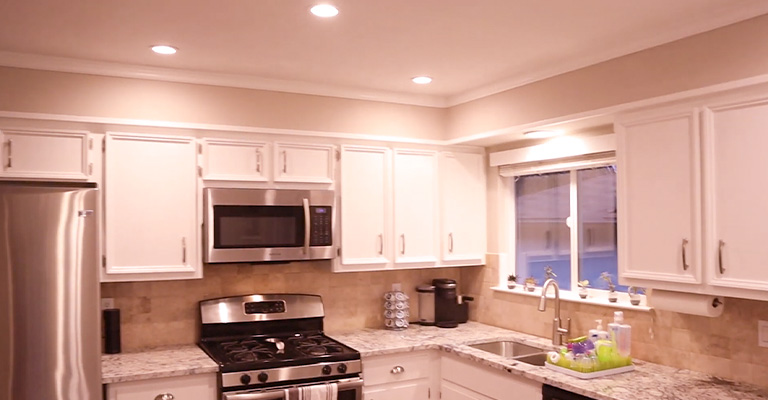
Recessed lighting fixtures for residential applications are usually between 4 and 7 inches in diameter.
The length and size of the area that you wish to illuminate may help to answer this question. Kitchen countertops can be illuminated well with a 4-inch fixture in an 8-foot ceiling.
Final Words
The proper kitchen recessed lighting spacing is paramount to achieve a harmonious and functional lighting environment. As you embark on your recessed lighting project, it’s essential to consider the various zones within your kitchen and how each requires a distinct lighting approach. Recessed kitchen lighting is a popular choice primarily for general or ambient lighting, illuminating the broader spaces with a uniform glow.
The success of your kitchen lighting layout doesn’t merely rest on the placement of general or ambient lighting fixtures alone. It’s about strategically positioning each light source, ensuring they complement each other, and augmenting them with specialized fixtures like under-cabinet lighting. This balance helps to both accentuate key areas and maintain functionality.
Remember, the art of lighting is about balance and precision. As you integrate your kitchen recessed lights, always keep in mind the primary purpose of each zone, and use your lighting to enhance, accentuate, and facilitate your kitchen’s daily activities. The marriage of form and function will not only ensure your kitchen is aesthetically pleasing but also a joy to work in.

